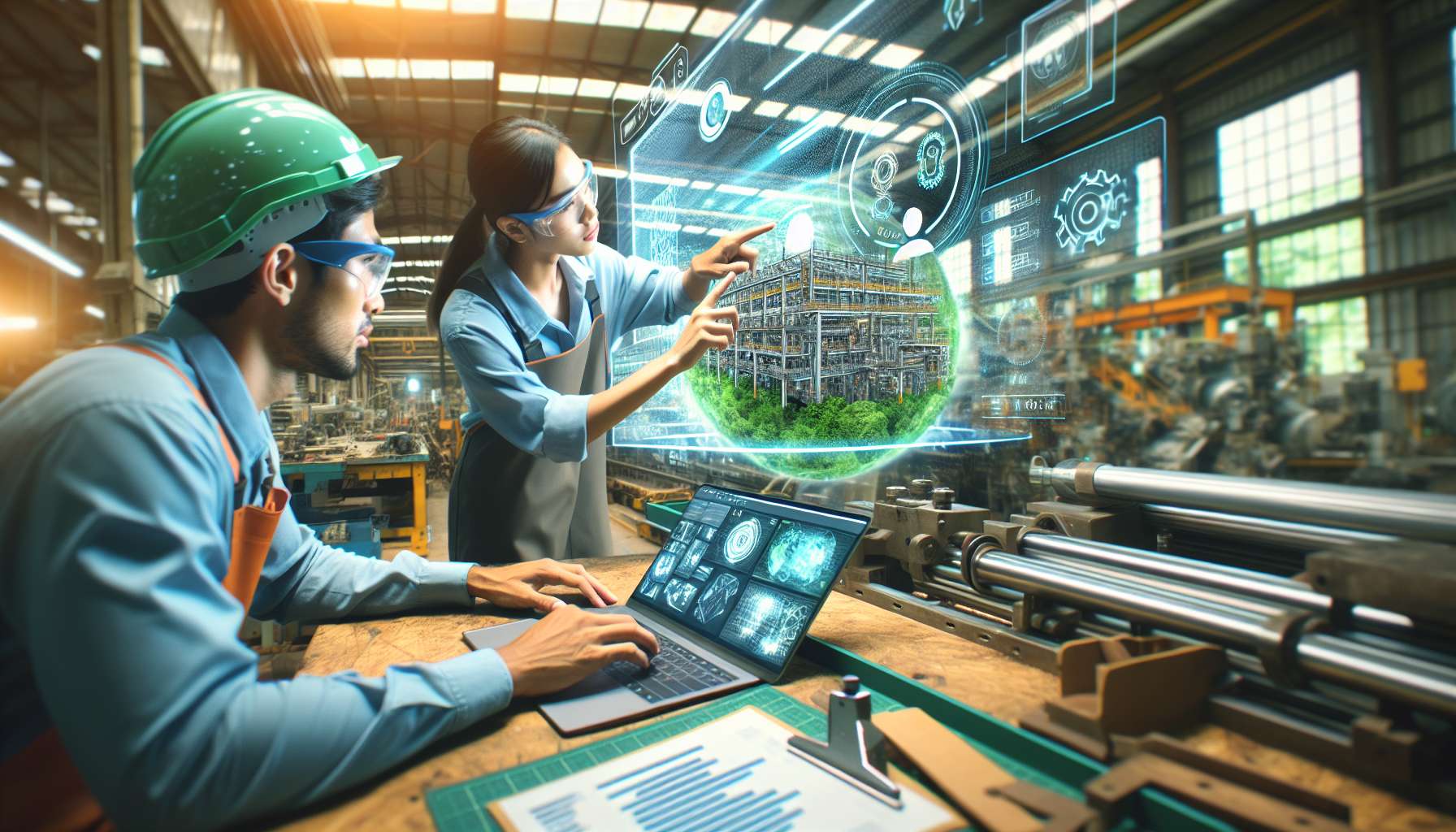The Environmental Benefits of Adopting AR in Sustainable Manufacturing
As the world becomes more conscious of the environmental impact of industrial practices, businesses are increasingly turning to innovative technologies to reduce their carbon footprint. One such technology that has gained significant attention is augmented reality (AR). By integrating AR into sustainable manufacturing practices, businesses can not only improve efficiency and productivity but also contribute to a greener future.
Reduced Material Waste
One of the key advantages of using AR in sustainable manufacturing is the significant reduction in material waste. Traditional manufacturing processes often involve trial and error, leading to the production of defective or imperfect products. This results in wasted resources, including raw materials, energy, and water.
With AR, manufacturers can create virtual prototypes and simulate production processes before physically manufacturing a product. This allows for better design optimization, identification of potential flaws, and the ability to make necessary adjustments in the virtual environment. By minimizing errors and iterations, businesses can significantly reduce material waste, leading to cost savings and a more sustainable manufacturing process.
Energy Efficiency
AR can also play a crucial role in improving energy efficiency in manufacturing. By overlaying digital information onto physical objects, AR enables workers to access real-time data, instructions, and guidance without the need for printed manuals or physical documents. This eliminates the need for excessive printing and reduces paper waste.
Furthermore, AR can optimize energy consumption by providing workers with real-time insights into equipment performance and energy usage. By monitoring and analyzing data through AR interfaces, manufacturers can identify energy-intensive processes and implement energy-saving measures. This not only reduces energy consumption but also lowers operational costs, making sustainable manufacturing practices economically viable.
Streamlined Maintenance and Repair
Maintenance and repair are essential aspects of sustainable manufacturing, as they prolong the lifespan of equipment and reduce the need for new replacements. AR can revolutionize these processes by providing technicians with interactive, step-by-step instructions overlaid onto physical machinery.
With AR, technicians can quickly identify faulty components, access repair manuals, and visualize complex repair procedures. This streamlines the maintenance process, reduces downtime, and minimizes the risk of errors. By extending the lifespan of equipment through efficient maintenance and repair, businesses can reduce their environmental impact by decreasing the demand for new manufacturing equipment.
Enhanced Training and Knowledge Transfer
Effective training and knowledge transfer are crucial for sustainable manufacturing practices. AR offers immersive and interactive training experiences, allowing workers to learn complex procedures and techniques in a safe virtual environment. This not only enhances learning outcomes but also reduces the need for physical training materials and resources.
AR can also facilitate knowledge transfer by enabling remote collaboration and expert assistance. Through AR-enabled communication platforms, experts can guide workers in real-time, regardless of their physical location. This eliminates the need for travel, reduces carbon emissions, and enhances overall operational efficiency.
The Future of Sustainable Manufacturing
The integration of AR into sustainable manufacturing practices is just the beginning. As technology continues to advance, we can expect even more innovative applications of AR in the pursuit of environmental sustainability.
For instance, AR can be used to optimize supply chain logistics, reducing transportation-related emissions and improving overall efficiency. Additionally, AR can enable predictive maintenance, leveraging machine learning and artificial intelligence to identify potential equipment failures before they occur, further reducing downtime and resource waste.
By embracing AR and its potential for sustainable manufacturing, businesses can not only improve their bottom line but also contribute to a greener and more sustainable future. The environmental benefits of adopting AR are clear, and it is up to businesses to seize this opportunity and lead the way towards a more sustainable manufacturing industry.





